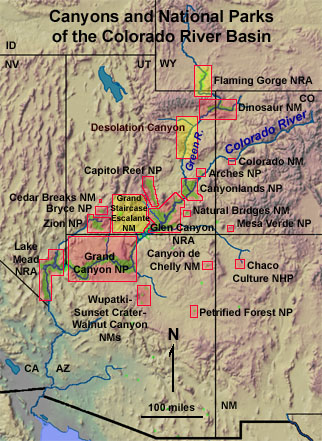
Click on names on map to see park info.
Alphabetical list of rock units in the region
Rock units listed by geologic age
Click on the map or list below.
Arches National Park
Bryce Canyon National Park
Canyonlands National Park
Capitol Reef National Park
Canyon de Chelly National Monument
Cedar Breaks National Monument
Chaco Culture National Historic Park
Colorado National Monument
Desolation Canyon and Gray Canyon
Dinosaur National Monument
Flaming Gorge and Red Canyon
Glen Canyon National Recreation Area
Grand Canyon National Park
Grand Staircase - Escalante Canyons National
Monument
Lake Mead National Recreation Area
Mesa Verde National Park
Natural Bridges National Monument
Petrified Forest National Park
Wupatki-Sunset Crater Volcano-Walnut Canyon
National Monuments
Zion National Park